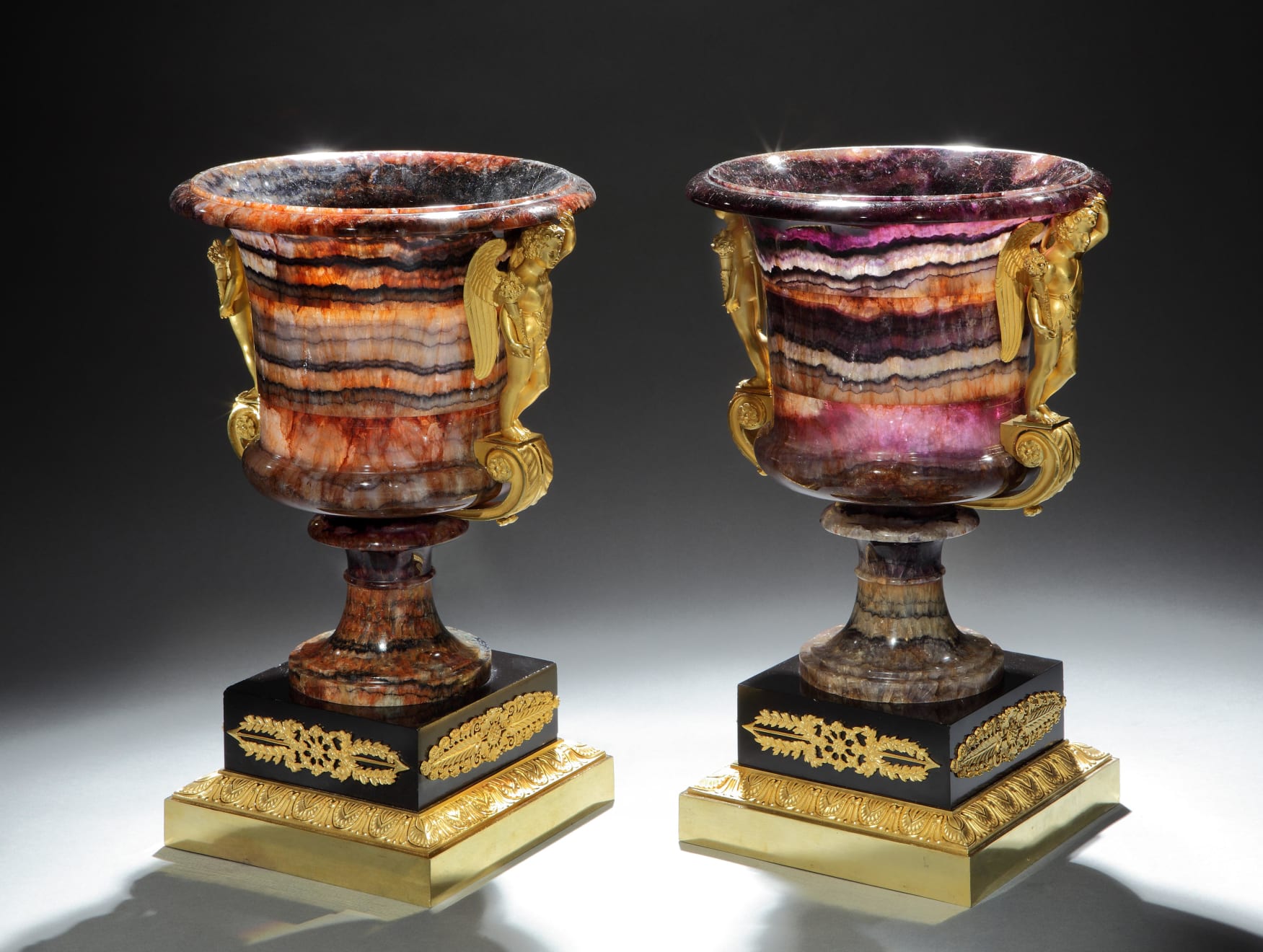A Pair of Regency Ormolu Mounted Blue John Campana form Urns
15 ¼ x 9 ¼ in
Further images
Provenance
Private Noble Collection, Leicestershire.The artistic language of this remarkable pair of vases has been specifically conceived to celebrate natural beauty and love. The carefully chosen figured blue john is a glorious illustration of the wonders of the earth; the winged spirits supporting the vase, with their bounteous cornucopiae, are classical symbols of love and fertility; showing the human form celebrating the produce of nature. The mounts on the base have been selected to reinforce the symbolism; with Cupid’s arrow surrounded by natural garlands. The beautiful poetry of the design of these vases is underlined by the technical excellence of their execution; both in the matching and joining of the intense blue john veins and the finely modelled and chased mounts, which represent the very best gilt metal work of the Regency period.
The Blue John
The blue john is from the Bull Beef Vein: stone from both the upper level working and the lower level workings of the Bull Beef Cavern have been used in construction. The lower vein was actually worked first and they followed it upwards to reach the upper level. The mining date can be therefore identified with some certainty to be between 1807 and 1810.
There were only a few makers with the facilities and equipment to work large pieces of stone and even fewer with the knowledge to assemble and construct the larger hollow items. The blue john would have been cut and turned either at the marble works at Ashford-in-the-Water or at Joseph & Thomas Hall’s Marble Works at Derby. The work is very similar to that of the maker James Shore and he certainly used the distinctive bull beef veins in his other large pieces, and also assembled and finished his work in a very similar fashion.
We are grateful to Richard M Haw BSc, Mine Manager and Geologist to the Blue-John Cavern 1997-2007, for providing this information from the mine records.
The Ormolu
The ormolu mounts were made by Smith & Chamberlain of Birmingham (a copy of their Pattern Book, published in 1822 is at the V&A, Prints & Drawings Study Room, gift of Leonard Bolingbroke Esq.












